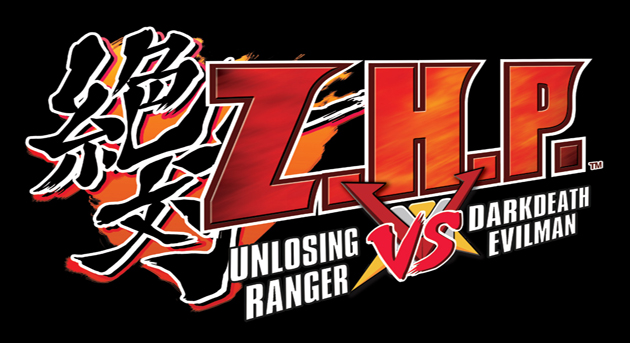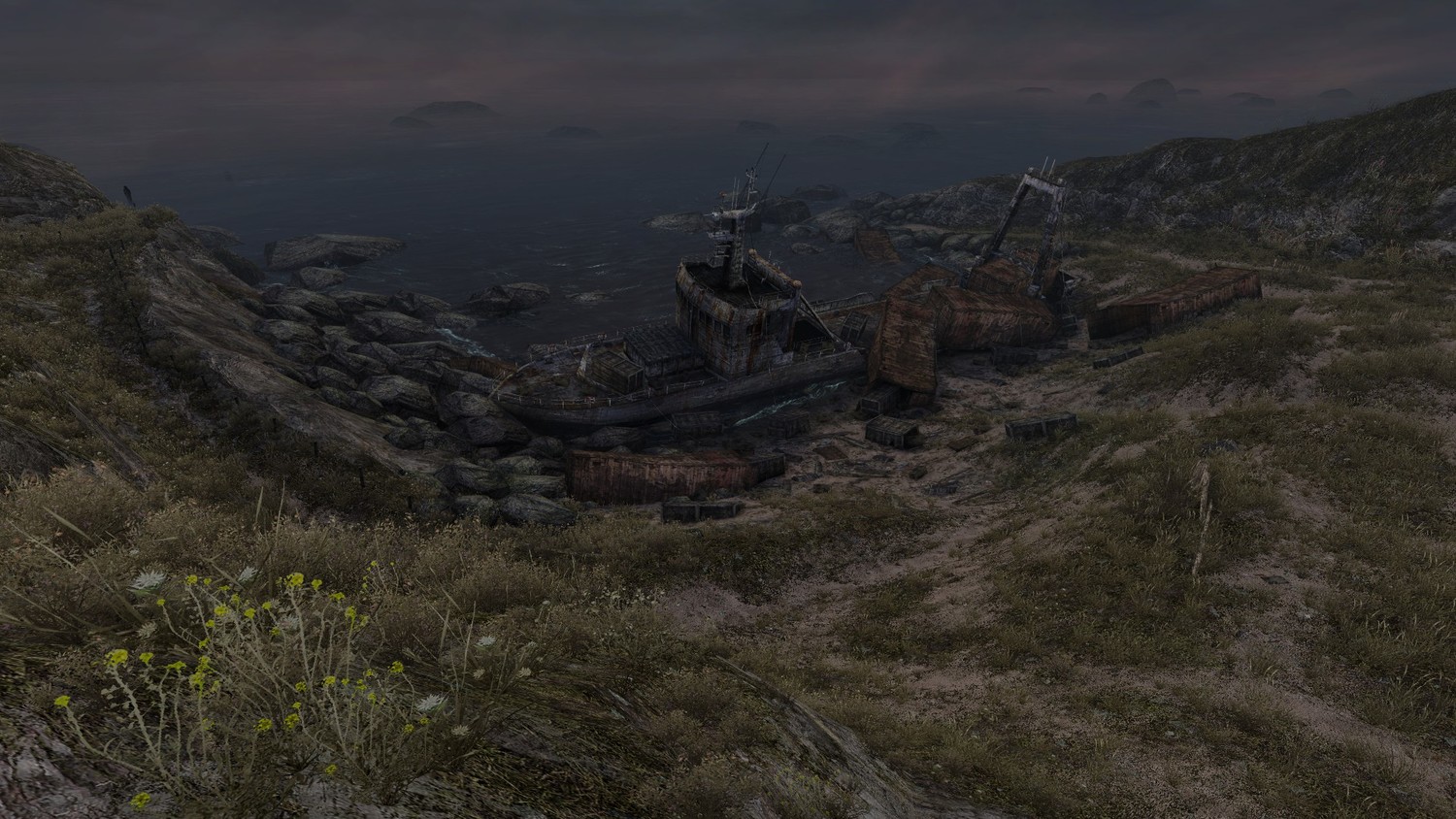
Review: Z.H.P. Unlosing Ranger vs. Darkdeath Evilman
Posted by Eric G on April 2nd, 2011 | 1 Comment | Tags: Z.H.P. Unlosing Ranger vs Darkdeath Evilman
My journey with Z.H.P. has been sinusoidal, ranging from crests of delight to troughs of detestation. I’d like to note up front that this game is from Nippon Ichi Software, and as such shares many things in common with their previous outings. I’ll keep the comparisons to a minimum, but just know that Z.H.P. doesn’t come off as an entirely new game. Its mechanics and storyline are novel, for sure, but there are a lot of things here that will be familiar to any NIS veteran (a title I am close to holding).
Z.H.P. starts off hilariously enough. The Absolute Victory Unlosing Ranger oversleeps and is late to an appointment to save the world from Darkdeath Evilman, who is threatening to destroy Super Baby, Earth’s sole savior. Yeah. The Unlosing Ranger crosses a street without looking and is hit by a car. Before he dies, he bestows his tight outfit to an unsuspecting civilian. You play as the civilian who is posing as the Unlosing Ranger. Darkdeath Evilman makes quick work of you, and both you and the actual Unlosing Ranger are sent to Bizarro Earth to attend training school at the World Hero Society. Trust me, it makes sense. The entire point of the game is to train for the last boss battle. You do so by completing missions (read: crawling dungeons) and tackling serious issues (more on the issues later). You see, the Unlosing Ranger’s defeat affected many people in the real world, so it’s up to you to help their counterparts who exist in the bizarro world.
Though you will constantly have Pirohiko (the Unlosing Ranger) and Etranger (the trainer) by your side spouting life lessons and teaching you how to play, Z.H.P.’s gameplay focuses on one character. It’s not quite a strategy RPG, but it does borrow several of the attributes that define the genre. Similar to Cladun, much of Z.H.P. takes play in a central town. The game progresses as you tackle more and more dungeons by talking to your trainer. After every dungeon, you’re sent back to Earth to fight DE, only to be defeated and humiliated. As you get stronger, the battle screen in which you fight DE becomes more advanced and the citizens of Earth begin rooting for you. Along with the typical attributes found in most RPGs (attack, hit rate, speed, etc), Z.H.P. adds a touch of novelty in its continuously changing Hit Points/Energy system. Dungeons are laid out as a grid, and each space you move decreases your Energy. As your Energy depletes, your Hit Points increase. Energy is also used to activate special attacks and pick up/throw enemies/items. You’re going to want to keep a constant eye on your Energy, because when it falls to 0%, your Hit Points decrease every move you make. Energy can be refilled by consuming chunks of meat, which are items only found in dungeons. This bears repeating (and italicization): Meat cannot be bought in town. It can only be obtained by happening upon it in a dungeon or as a defeated enemy item drop. This means that you’ll be venturing into dungeons with an ever-dropping Energy level, hoping to find meat to refill it before you die of starvation. It’s not too often that you’ll die due to a lack of food, but it reminded me of Dark Cloud’s thirst meter, something I never want to be reminded of… ever.
Death in Z.H.P. is a serious ordeal. When you die, you return to town sans items, money, and hope. All of the experience you retained up to that point is pooled into your Total Level, so though you do revert to level one upon death, your Total Level and the base stats tied to it never decrease. The entire game is described as “training, training, training,” which, in a game player’s vocabulary, translates to “Grindfest 101“. What’s worse is that almost everything you do in Z.H.P. is preceded and proceeded by lengthy tutorials and/or sessions of dialogue. The tutorials are many in Z.H.P. In looking through my notes of the game, I see several different bullet points that read “There are a LOT of tutorials,” “So many tutorials,” and “Wow…” It’s a good thing NIS’s trademark sense of humor and stellar sound design surround the tutorials, because otherwise I would have had a hard time playing Z.H.P.
The times when I least liked Z.H.P. came when I got repeatedly walloped in certain dungeons. I was stuck on the fourth dungeon for a very long time, and my reward for defeating it was a tutorial explaining what new things I unlocked in town. Much of Z.H.P. is unavailable at the start of the game, which is a shame. The Shadowgram, for example, is an incredibly deep system that allows you to boost your base stats by depositing broken equipment into slots that form the shape of a person. It’s a nice way to turn the massive amount of broken equipment you’ll accumulate into something useful, and the booster devices you can purchase and place upon the chips add another layer of complexity to the whole thing. The problem with the Shadowgram is that it lies behind many, many hours of gameplay. The same can be said of other features in the game such as interchangeable town facilities and the ability to access them within a dungeon. One thing I didn’t expect to find in an NIS game is a heart.
In typical NIS fashion, issues both within and without the game are dealt with in a humorous fashion. Z.H.P. doesn’t sway far off the beaten path in this regard, but it does occasionally take a break from the constant joking to face some serious issues. Each dungeon has its own gimmicks within it that changes the way you play. These range from disappearing platforms to floating on balloons to reach higher grounds. What’s also attached to each dungeon is an issue. For instance, the point of one of the dungeons is to stop a girl from being bullied by her big sister. Throughout the dungeon, you learn that the big sister is the one being bullied by the dad, and the little sister is bullying one of her good friends. There are tons of jabs at Pirohiko, Etranger, and the main character, but upon clearing the dungeon, the overall lesson rings true: Bullying comes in many forms, and it takes strength found in the heart (not just the muscles) to deal with it accordingly. Other issues that find their way into Z.H.P. include child neglect, avoiding sacrifice for great justice, and the power of love. The game would be perfect for a kid to play since the messages are wrapped in an entertaining package.
Z.H.P. is a single player, single character, semi-strategy RPG. You move along a grid and crawl dungeons. The reason I didn’t hark on the gameplay is because it’s not one of Z.H.P.’s strong suits. Enter a dungeon, level up, wash, rinse, repeat, and, if you’re good, progress. My major concern with Z.H.P. is that you’re learning to play rather than actually playing for the first big chunk of the game. All of the music tracks are great, and the equipment is as funny as is it in former NIS games. (The description for the Wizard Hat item reads, “I put on my robe and wizard hat…” and its skill is titled “Mana Release.”) If you can make it a dozen hours or so, you’ll get to a point where the game is actually fun to play. And, like many other NIS games, there are a whole bunch of ways to keep you playing forever, including randomly generated dungeons and New Game+ modes to replay the story. If you’ve got the time and the money, I recommend trying it out, if only to see your Prinny wife complain every time you return from a dungeon.
A copy of this game was provided by the publisher for review purposes. For more info on our review policy click here. This review is for the PlayStation Portable version of the game.
Click Here to purchase Z.H.P. from Amazon.com
General Info
- Developer: Nippon Ichi Software
- Publisher: NIS America Inc.
- Release Date: November 2010, October 2010
Score:
What I Like:
- Music
- Sense of humor
- Shadowgram
- Real life lessons
What I Dislike:
- Unending tutorials
- Unabated grindin'
- Unforgiving death penalties




